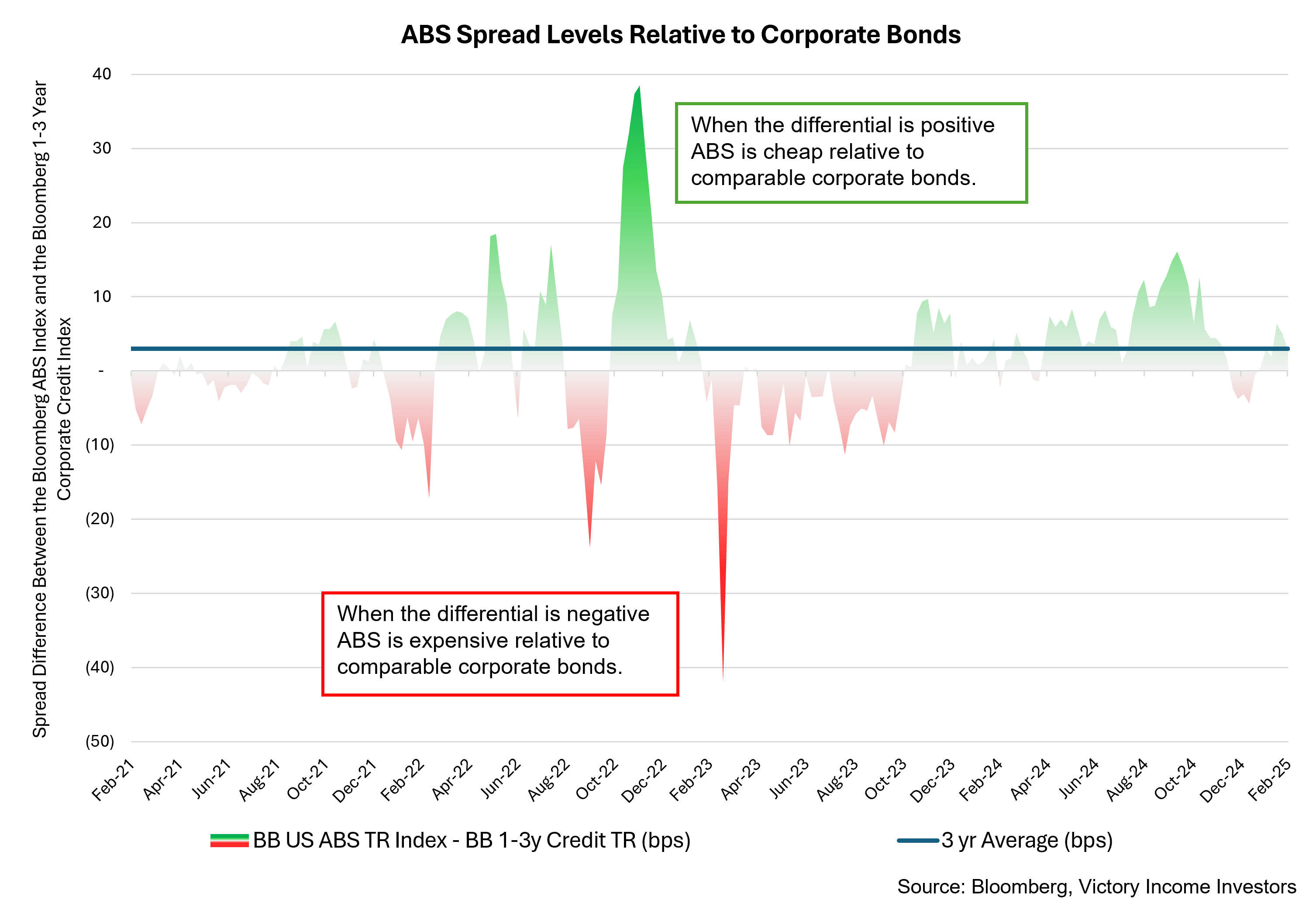Fixed Income: Diving into ABS
Allyson Krautheim 07-Apr-2025

Everyone loves a good pool (of underlying assets, that is). Certainly bond managers do. There are reasons why asset-backed securities (ABS)—a type of fixed income investment collateralized by an underlying pool of assets—look attractive to investors today. We’re here to explain a bit about the ABS market and why we tend to include select ABS in many of our diversified fixed income portfolios.
Of course, all investors like to maximize income from their fixed income portfolios. But we always caution that capturing incremental income should not be done haphazardly and without careful evaluation of risk. In other words, don’t stretch for yield in ways that may jeopardize one of the key benefits of bonds—the potential to act as a portfolio ballast to help offset the volatility and risk of equities.
With that in mind, we offer several key reasons why we like to include asset-backed securities—and more specifically, consumer-backed ABS—in our core and core-plus fixed income portfolios.
- Diversification. ABS affords investors an opportunity to diversify their fixed-income exposure away from Treasuries and corporate bonds, which tend to dominate many portfolios. Investors can choose the types of ABS they want to target, including but not limited to: auto loans, credit cards debt, equipment leasing, and more. This is a means to spread risk and supplement an income stream based largely on the consumer, which is a key underlying engine of the U.S. economy.
- Liquidity & History. The ABS market may not be well known, but it’s certainly not new. The market for consumer ABS dates back to 1985, and credit performance has been tested through several economic cycles. It’s worth noting that no consumer ABS bonds incurred principal losses during the Great Financial Crisis. That’s quite a statement. In addition, this nuanced sector of the fixed income world offers excellent liquidity, evidenced by an estimated $780 billion of outstanding securities, as of year-end 2024, according to Victory Income Investors’ analysis of Bloomberg data. Moreover, there was new substantial new annual issuance of approximately $300 billion in ABS in 2024, the highest volume since 2006. In other words, there should be plenty of ways to trade in and out of ABS positions.
- Risk-appropriate opportunities. The ABS market tends to be shorter duration with various opportunities across the risk spectrum. Typical buyers range from conservative money market funds to more speculative private equity. Investors with less risk appetite and high liquidity needs can find ABS with investment-grade credit ratings and excellent debt ratio coverages. Conversely, ABS backed by lower-rated consumer credit (and with less liquidity) might appeal to more aggressive investors seeking a high-risk, high-yield trade-off.
ABS investors typically receive regular interest payments (and often periodic principal repayments) from the underlying debt. The receipt of regular principal payments is a natural de-leveraging mechanism that tends to enhance the credit worthiness of ABS over time. There are additional credit enhancement features inherent to some ABS products as well, such as supplemental cash reserve collateral and first loss provisions, depending on the ABS structure.
All About Spread
Victory Income Investors likes ABS right now because it offers compelling value relative to corporate credit, in our opinion. This is evident in the credit spread, which is the yield difference between different types of fixed income securities with similar maturities. The graph below compares investment-grade corporate bonds to highly rated Consumer ABS and illustrates the point.

Powerful Potential
We believe today’s ABS market offers attractive spread opportunities relative to corporate bonds or Treasuries, but with reasonable and measured additional risk. Active fixed income managers with experience in this market and who have access to new issuance may have a competitive advantage. Is your bond portfolio embracing the ABS potential?



